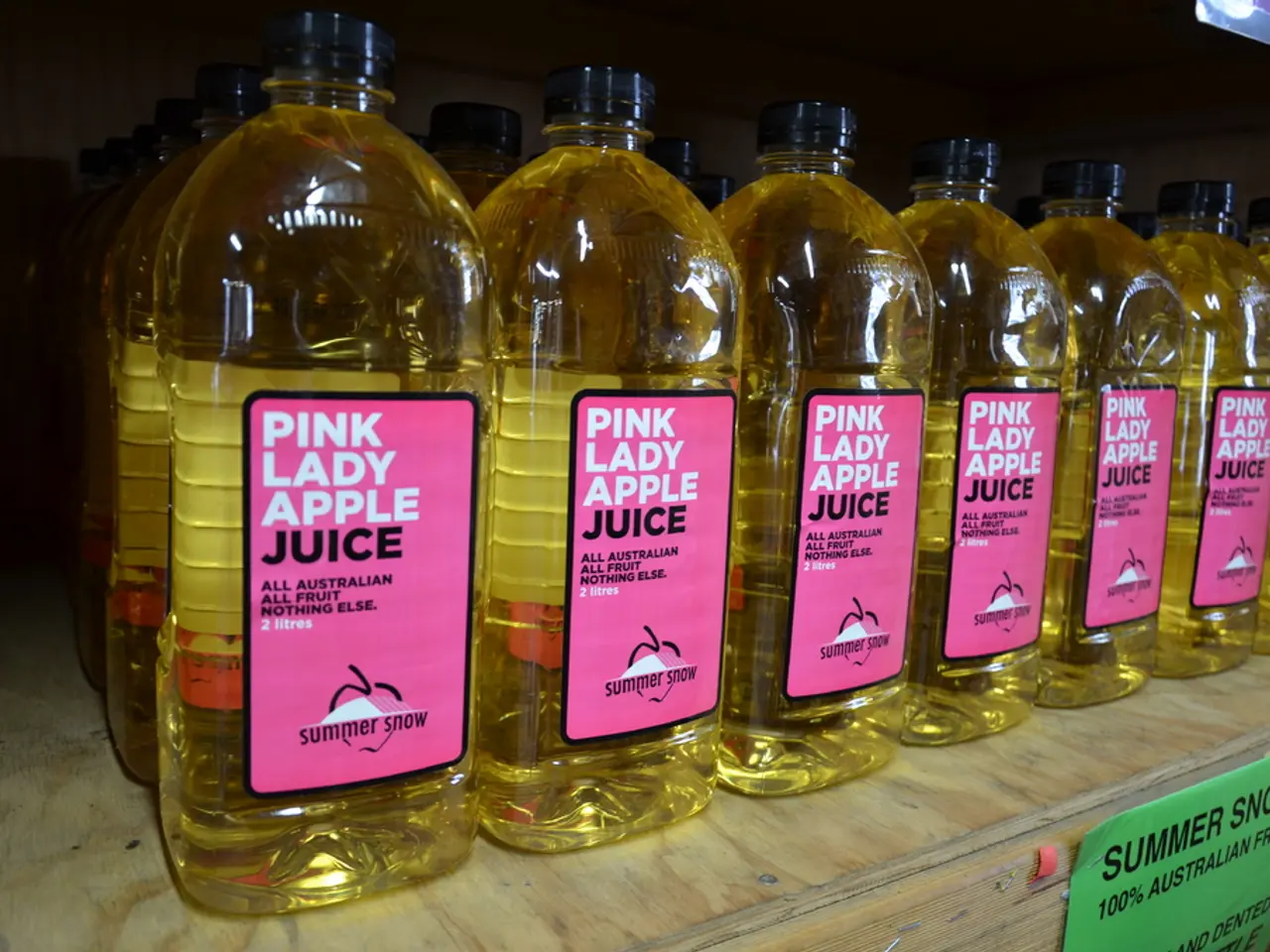FDA proposal could potentially reduce sugar content in your orange juice
In a move aimed at adapting to changing agricultural realities, the US Food and Drug Administration (FDA) has proposed a new regulation to lower the minimum Brix (sugar content) requirement for pasteurized orange juice. The rationale behind this change is to ensure the product meets consumer expectations for taste and quality while preventing economic adulteration.
The Standard of Identity (SOI) for pasteurized orange juice was set to reflect the natural qualities of the fruit used. The sugar level corresponds to what is typically found in U.S. oranges, maintaining the "basic nature and essential characteristics" of the product. However, due to factors such as citrus greening disease, which reduces sugar content in fruit, the FDA has proposed lowering the minimum sugar content from 10.5% to 10% [1][2][3][5].
This adjustment aims to promote honesty and fair dealing for consumers by updating standards to align with current orange crop characteristics. It also provides flexibility for the food industry, helping growers and manufacturers who face reduced yield and lower-sugar fruit without forcing reliance on imported, higher-sugar juice. The change is also intended to prevent economic inefficiencies, such as usable lower-sugar crops being diverted to lower-value products, harming growers' profitability and increasing dependence on imports [1][2][3][5].
For people with limited mobility in their hands, whole fruit juice may help supplement their diet. However, for those with diabetes, prediabetes, or elevated blood sugars, the sugar content of orange juice is a consideration. The American Academy of Pediatrics (AAP) recommends that caregivers don't give any fruit juice to infants under 12 months and limit fruit juice to 4 to 6 ounces a day for children aged 1 to 6 years old. Whole fruits are preferred over juice due to the fiber and additional vitamins and minerals they provide [6].
Overconsuming is easier when drinking juice than eating a piece of fruit, according to Dr. Tom Brenna. The AAP does not recommend juice, but it can be acceptable in moderation. Pairing juice with fiber and protein can help feel satisfied. Including foods such as yogurt, whole grain cereal, whole grain toast with peanut butter, or cheese toast with juice at breakfast can be a good option. It is recommended to use small glasses when drinking juice [6].
The Brix scale measures the sugar and other dissolved solid content of a liquid. The FDA states that the change is unlikely to impact the taste or nutrients significantly. Electronic or written comments from the public are due on November 4 regarding the possible regulation. Whole fruit juice should not replace daily fruit or fluid needs, but can supplement if necessary. Many Americans, particularly teens, do not eat enough fruits, and 100% fruit juice can be a way to get some vitamins and minerals if consumed in small volumes [6].
References:
[1] FDA (2021). FDA proposes change to orange juice standard of identity. Retrieved from https://www.fda.gov/food/food-ingredient-packaging/fda-proposes-change-orange-juice-standard-identity
[2] FDA (2021). FDA proposes to lower the minimum Brix requirement for pasteurized orange juice. Retrieved from https://www.fda.gov/food/food-ingredient-packaging/fda-proposes-lower-minimum-brix-requirement-pasteurized-orange-juice
[3] Brenna, T. (2021). FDA proposes to lower the minimum Brix requirement for pasteurized orange juice. Retrieved from https://www.nutrition.org/news/fda-proposes-to-lower-the-minimum-brix-requirement-for-pasteurized-orange-juice/
[4] USDA ARS (n.d.). Brix. Retrieved from https://www.ars.usda.gov/ARSUserFiles/80400530/docs.htm
[5] American Heart Association (n.d.). Added Sugars. Retrieved from https://www.heart.org/en/healthy-living/healthy-eating/eat-smart/sugar/added-sugars
[6] AAP (2021). Fruit Juice. Retrieved from https://www.healthychildren.org/English/healthy-living/nutrition/Pages/Fruit-Juice.aspx
- The proposed change by the FDA in the Standard of Identity for pasteurized orange juice could lead to a shift in the health-and-wellness lifestyle, as consumers may expect a change in taste and quality due to the lower sugar content.
- The food-and-drink industry, particularly orange juice manufacturers, are expected to adapt their practices in response to the FDA's proposal for a change in the minimum Brix requirement, which may impact the health and wellness choices of consumers.
- In light of the FDA's proposal to lower the minimum sugar content in orange juice, it becomes essential for individuals with health concerns, such as diabetes or elevated blood sugars, to be more mindful of their food-and-drink choices and maintain a balanced diet that includes whole fruits and a limited intake of 100% fruit juice.




